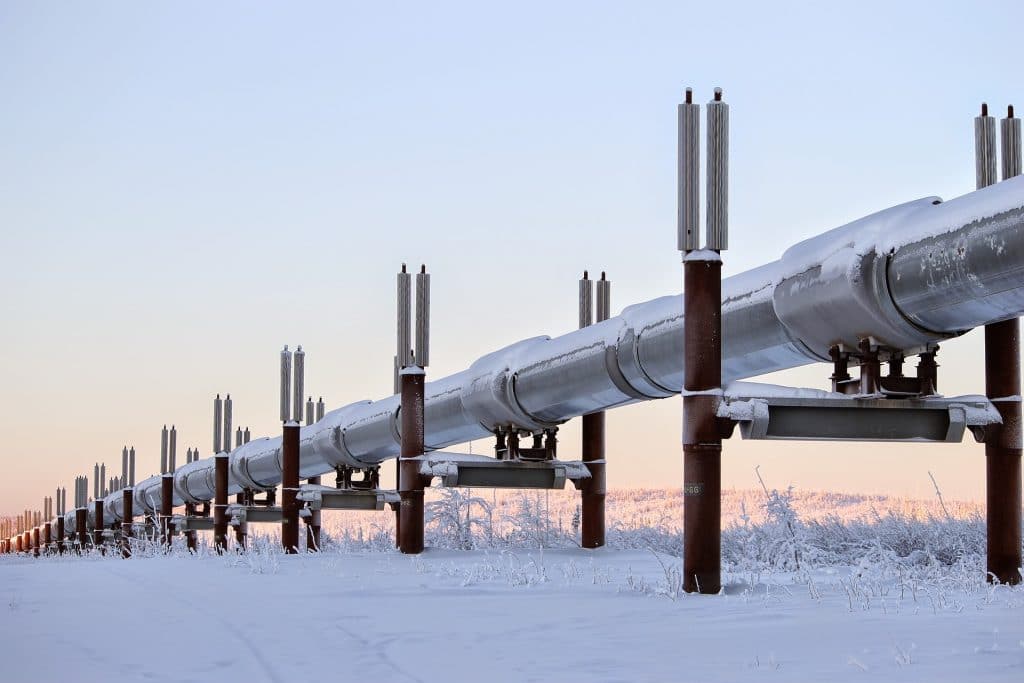The time is ripe to cut methane emissions in the natural gas value chain
The article addresses the role of customers and importers in promoting greater transparency and help reduce the intensity of methane coming from natural gas imports.
With the recently published EU Strategy to cut methane emissions, the EU sets out to lead global efforts to mitigate methane emissions. The Strategy targets both domestic and imported emissions by prioritizing greater transparency and improved data quantification. To this objective, the EU advocates for harmonized measurement, reporting and verification (MRV) for all energy-related methane emissions, arising during the exploration, transport and consumption of fossil fuels – natural gas, oil and coal.
Natural gas, in particular, is under increasing pressure. After ten years of being branded as a ‘bridge fuel’, policymakers, civil society, investors and innovators ask if it hasn’t already reached its destination. With more and more jurisdictions announcing climate neutrality targets or directly banning natural gas use in all new construction, its role in the current energy system is challenged.
The OGMP 2.0 framework
Besides all the talk, the European Union is determined to walk the walk by using its leverage as a major fossil fuel importer. Together with the UN Environment Programme (UNEP), and the Environmental Defense Fund (EDF) the EU Commission supports, financially as well as ideologically, the development of the Oil and Gas Methane Partnership (OGMP). Under the newly established OGMP 2.0 framework, 62 companies – representing 30 % of the world’s oil and gas production – will report their Scope 1[1] methane emissions from all sources, at both operated and non-operated ventures, across the entire value chain. The framework promotes the mitigation of methane emissions by encouraging companies to set their reduction targets.
During the launch of this initiative, Kadri Simson, EU Energy Commissioner, said: “Today’s signature is the first deliverable under the Commission’s recent methane strategy. There are many more steps to take to cut emissions along the entire value chain and I hope to work closely with all – European and international – partners to reach this goal”.
Global gas consumers demand action
Independently from the developments in the EU, Singapore’s biggest buyer of liquefied natural gas (LNG), Pavilion Energy, has asked all sellers to quantify the GHG emissions associated with each cargo produced, transported and imported into Singapore and to prove them in their declarations.
This demonstrates that customers and importers can promote greater transparency and ultimately help reduce the intensity of methane coming from natural gas imports. However, the episode also begs many questions: how can the credibility of those declarations be verified by customers? And, how can the major natural gas importers (EU, China, South Korea, Japan) promote the reduction of methane emissions from fossil fuel imports, and natural gas, in particular? Finally, what instruments can these importers use to incentivise methane abatement?
How could a methane procurement standard work?
One type of policy intervention– that enjoys support from the major oil and natural gas companies – is the introduction of a methane procurement standard. Procurement standards – underpinned by mandatory performance standards – are not unheard of in the EU context and in comparable-size market structures; e.g. timber (FLEGT), cacao and to a lesser extent, biofuels are all examples of products primarily produced in third countries but consumed in the EU.
What could be done is to introduce, at the EU level, a mandatory minimum percentage of gas with methane intensity lower than 0,2% at the portfolio level of all major gas importers-buyers. This implies that the buyers could be required to demonstrate that they buy at least 80% of gas from “low methane emissions supply chains”, which could be framed as a standard condition in a contract (i.e. linked to volume and/or price) and as a condition to bid. EU level also could consider a mandatory methane performance standard at the time of import, à la FLEGT.
The effectiveness of procurement standards depends, to a large degree, on the certainty of data and the ability to verify the declarations submitted by the exporters.
How to alleviate the data problem?
The EU foresees an important role for the EU-led Earth observation programme, Copernicus, and the International Methane Emissions Observatory (IMEO). However, it is difficult to predict at this stage, when the data will be granular enough to enable market-based policy interventions.
Until it happens, a credible verification service for average methane footprint at the country level and based on what Copernicus “sees” must be established as the lowest common denominator. A legal basis for enabling immediate action could be: the definition by the EU of an “entry point”; a legal requirement enabling verification of methane footprint at each entry point (pipeline or LNG terminal); and a mandate enabling energy regulators to act, regulated fees for non-compliance.
After the data becomes sufficiently granular and robust, and for as long as Europe’s position in the international traded gas market remains strong: there is a need to for a credible verification service at the facility level of 3rd country suppliers, a legal basis enabling the use of economic instruments such as tradeable permits or taxes.
Better data could be achieved thanks to a mix of: regulatory clarity provided by a methane performance standard enshrined into law; pressure from the demand side through large gas buyer initiatives such as the one by Pavillion; further technology development (remote sensing); establishing measurement, reporting and verification (MRV) system for methane emissions in the EU based on the OGMP 2.0 methodology; promoting EU MRV via international methane emissions observatory and international frameworks such as equivalency agreements or arrangements covering MRV practices.
The impact of performance standards
The EU companies not complying with a performance standard may face various types of risk.
The reputational risk – that is the risk of value erosion of importers buying non-compliant gas, in direct contradiction to any net-zero Paris Agreement–inspired pledges, can be undermined as greenwashing and investors could blacklist them.
Commercial risk is related to value erosion through increased OPEX, depending on how penalties are calibrated. Last but not least, the upcoming regulation could put the natural gas companies’ social license to operate at risk.
From the perspective of non-EU companies, they face the following types of risk:
Reputational risk for IOCs, the potential market risk for producers tied to a long-term contract in Europe. Value erosion through increased OPEX from fees passed on by European end-customer and/or renegotiation of long-term contracts.
Regulatory risk – license to operate at risk for those non-compliant producers also registered as traders in the EU. Depending on how hard European penalties bite, business model innovation, transition away from O&G as core business.
What’s next?
The recent EU initiatives demonstrate that the EU is determined to address the issue of methane emissions and take responsibility for its role of major fossil fuels importer. The situation is changing outside the EU too. The major natural gas consumers: Japan, South Korea and China announced the carbon neutrality targets. This implies that natural gas producers and importers, who see gas as a strategic part of their portfolio, need to act now.
This article is an FSR-EDF joint publication
Note:
[1] Scope 1 emissions are direct emissions from owned or controlled sources. In contrast to, Scope 2 emissions, which are indirect emissions from the generation of purchased energy, e.g. electricity or Scope 3 emissions – all indirect emissions (not included in scope 2) that occur in the value chain of the reporting company, including both upstream and downstream emissions. This classification of emissions into three categories or ‘scopes’ have been introduced by the Greenhouse Gas Protocol.






